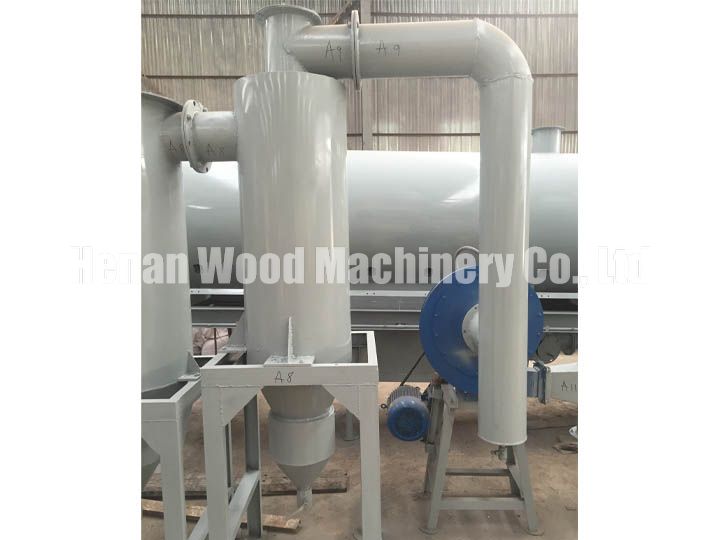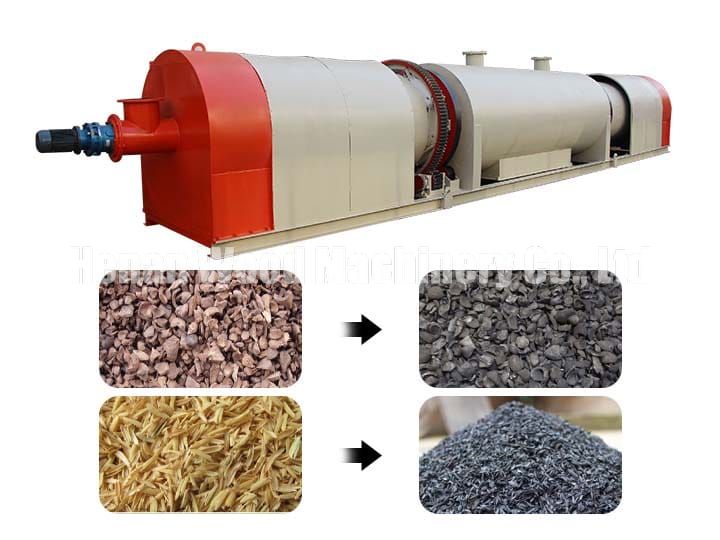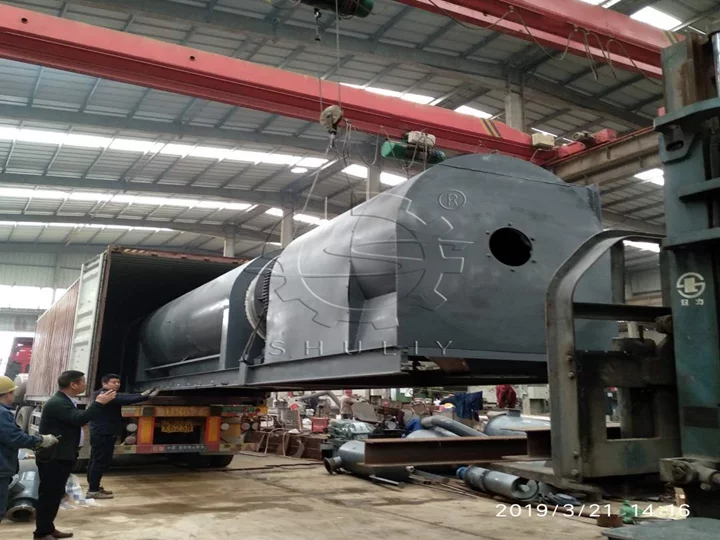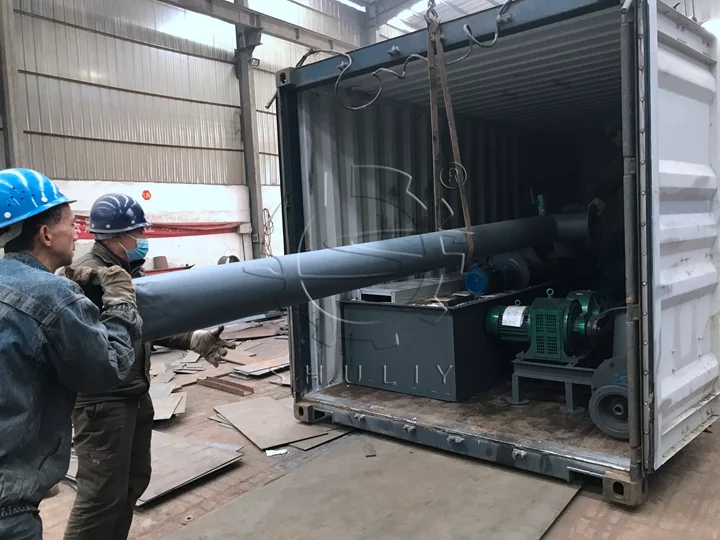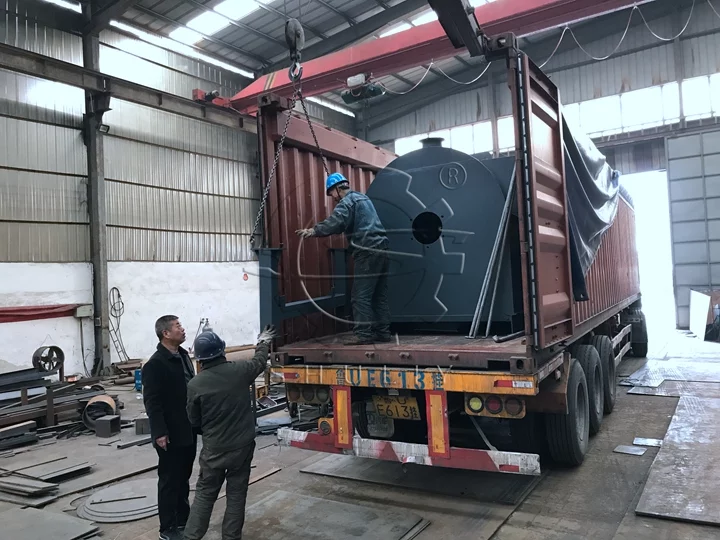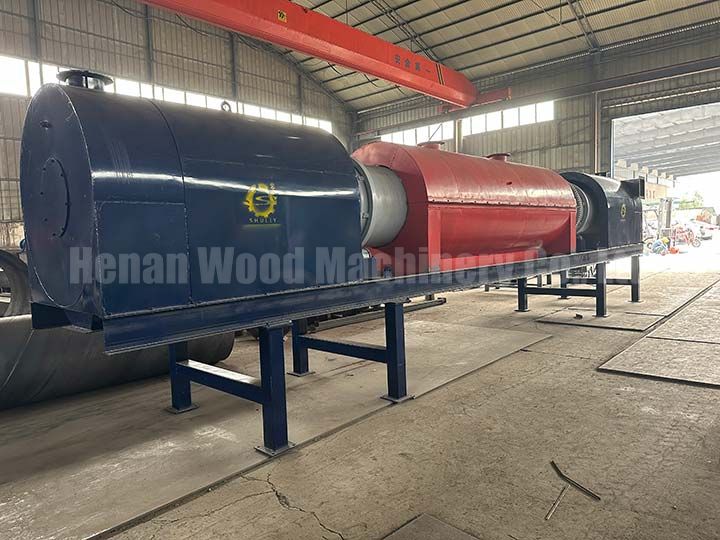เตาถ่านแบบต่อเนื่อง
| แบบอย่าง | WD-CF1200 |
| เส้นผ่านศูนย์กลาง (มม.) | 1200 |
| ความจุ(กก./ชม.) | 1200-1500 |
| กำลังหลัก (กิโลวัตต์) | 20 |
| อุณหภูมิถ่าน (℃) | 500-800 |
| กำลังพัดลม (กิโลวัตต์) | 5.5 |
เตาถ่านแบบต่อเนื่องเหมาะสำหรับการแปรรูปวัสดุชีวมวลต่างๆ เช่น เศษไม้ แกลบ และแกลบปาล์ม ด้วยกำลังการผลิต 1200-1500 กก./ชม. เครื่องนี้รองรับการป้อนอย่างต่อเนื่อง ทำให้สามารถเติมคาร์บอนได้อย่างต่อเนื่องและมีประสิทธิภาพ
ระบบนี้ประกอบด้วยคาร์บอนไดออกไซด์แบบหลายชั้น การควบคุมอัจฉริยะ และการรวบรวมผลพลอยได้โดยอัตโนมัติ เช่น น้ำมันดินและก๊าซที่ติดไฟได้ โดยจะจัดการกับความท้าทายของวิธีการถ่านแบบดั้งเดิมได้อย่างมีประสิทธิภาพ เช่น การเพิ่มประสิทธิภาพการผลิต ลดความเข้มข้นของแรงงาน และส่งเสริมการใช้ทรัพยากรหมุนเวียนอย่างยั่งยืน
วัตถุดิบของเตาถ่านแบบต่อเนื่อง
สำหรับเตาเผาคาร์บอไนเซชันต่อเนื่อง ความต้องการในวัสดุจะแตกต่างจากวัสดุที่ประมวลผลโดย เตาเผาแบบยก และ เตาเผาคาร์บอไนเซชันแนวนอน เตานี้ออกแบบมาเพื่อจัดการกับวัสดุที่นุ่มและเล็กซึ่งต้องมีคุณสมบัติเฉพาะเพื่อการคาร์บอไนเซชันที่มีประสิทธิภาพ.

ขนาดวัสดุ. วัสดุทั้งหมดต้องมีขนาดเล็กและบาง โดยมีขนาดไม่เกิน 10 เซนติเมตร.
วัสดุที่เหมาะสม. เตาเผาคาร์บอไนเซชันต่อเนื่องสามารถประมวลผลวัสดุที่มีคาร์บอนหลายประเภท รวมถึง:
- เปลือกถั่วลิสง
- เรื่องพืช
- เห่า
- หลอด
- เปลือกวอลนัท
- กะลามะพร้าว
- กะลาปาล์ม
- ขี้เลื่อย
วัตถุดิบสำหรับเตาเผาคาร์บอไนเซชันต่อเนื่องควรมีความชื้นต่ำกว่า 20% หากวัสดุเกินขีดจำกัดนี้ควรทำการอบแห้งล่วงหน้าด้วย เครื่องอบแห้งแบบหมุนชีวมวล เพื่อให้ได้ระดับความชื้นที่เหมาะสม.
ภายในเตาเผาถ่าน กระบวนการกลั่นแบบแห้งที่อุณหภูมิสูงและกระบวนการคาร์บอไนเซชันแบบไม่ใช้ออกซิเจนเกิดขึ้น เพื่อให้มั่นใจว่ามีอัตราการเกิดคาร์บอไนเซชันสูง เตาเผานี้เป็นตัวเลือกที่ยอดเยี่ยมสำหรับโรงงานแปรรูปถ่าน ซึ่งให้การผลิตถ่านที่มีประสิทธิภาพและมีคุณภาพสูง
โครงสร้างเตาถ่านแบบต่อเนื่อง
เตาถ่านแบบต่อเนื่องประกอบด้วยองค์ประกอบสำคัญหลายประการ: ระบบป้อนแบบเกลียวและแบบแบน ตัวเตาหลัก หน่วยจ่ายไอน้ำแบบควบแน่น หัวเปลวไฟ แหล่งเผาไหม้ อุปกรณ์ทำให้บริสุทธิ์ และตู้จ่ายพลังงาน
ในระหว่างการดำเนินการ วัสดุจะผ่านตามลำดับผ่านโซนอุ่น โซนคาร์บอไนเซชันที่อุณหภูมิสูง และโซนทำความเย็น เพื่อให้กระบวนการคาร์บอไนเซชันสมบูรณ์อย่างมีประสิทธิภาพ
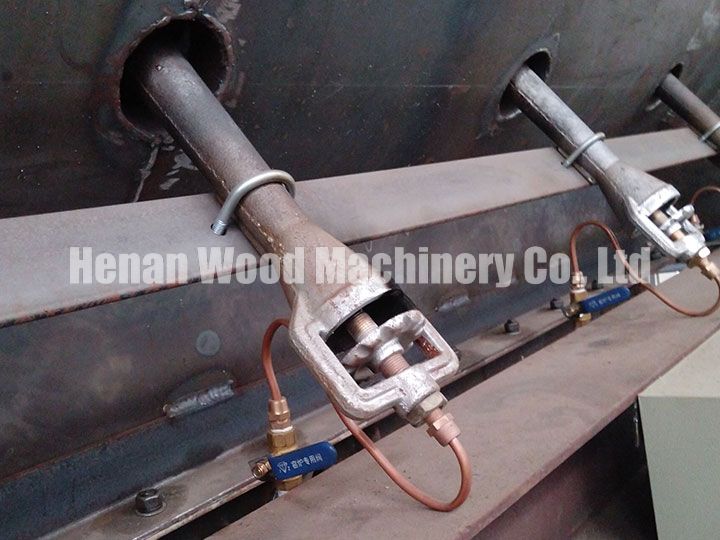
หัวจุดไฟของสระที่กำลังลุกไหม้
- รุ่น WD-CF1200 มีอุปกรณ์จุดระเบิดทั้งหมด 18 ชิ้น
- รุ่น WD-CF1200 มีอุปกรณ์จุดระเบิดทั้งหมด 16 ชิ้น
- อุปกรณ์จุดระเบิดเหล่านี้ใช้ในการเลือก LPG เป็นแหล่งความร้อนสำหรับเครื่องจักร
การเผาสระน้ำของเครื่องทำถ่านขี้เลื่อย
- บ่อเผาไหม้ในเครื่องทำถ่านขี้เลื่อยเป็นพื้นที่ควบคุมการเผาไหม้
- มันสร้างความร้อนที่จำเป็นเพื่อขับเคลื่อนกระบวนการคาร์บอไนเซชันอย่างมีประสิทธิภาพ
- ซึ่งช่วยรักษาสภาวะอุณหภูมิสูงให้สม่ำเสมอทั่วทั้งเตาเผา
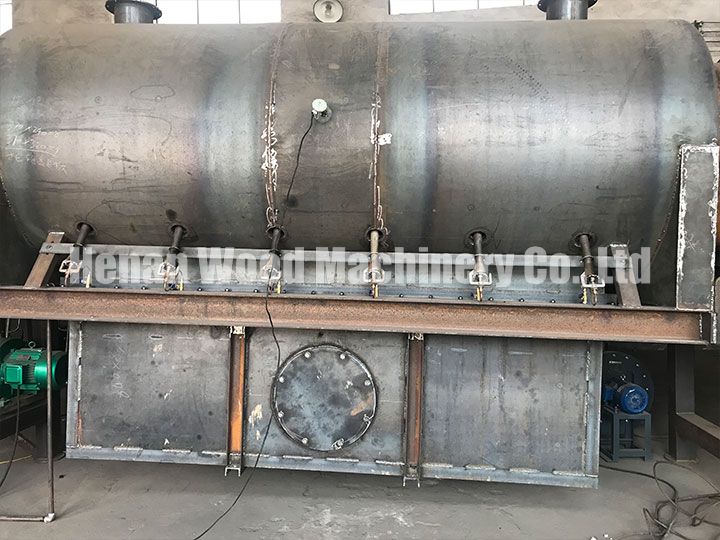
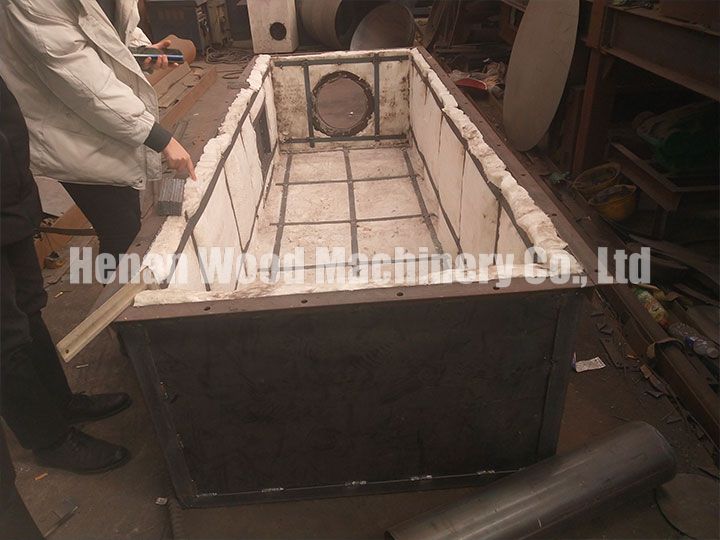
โครงสร้างภายในสระที่กำลังลุกไหม้
- สระเผาไหม้ทำจากเหล็ก Q235 หนา 4 มม. เพื่อความทนทาน
- หุ้มด้วยขนหินอุณหภูมิสูง 5 ซม. จึงกักเก็บความร้อนได้ดีเยี่ยม
- ขนหินมีน้ำหนักเบากว่าอิฐทนไฟแบบดั้งเดิม ทำให้การขนส่งง่ายขึ้น
- ขนหินให้ฉนวนกันความร้อนที่เหนือกว่าเมื่อเปรียบเทียบกับวัสดุทั่วไป
ขนแร่ภายในเตาถ่าน
- สร้างด้วยแผ่นเหล็กสแตนเลส 310 และใยหินเพื่อความทนทานที่เพิ่มขึ้น
- ให้การซีลที่ดีขึ้น ลดการสูญเสียความร้อน
- รับประกันการเก็บรักษาความร้อนอย่างมีประสิทธิภาพภายในห้องถ่าน
- รักษาอุณหภูมิที่เหมาะสมในพื้นที่การทำให้เป็นคาร์บอน ช่วยให้ได้ผลลัพธ์ที่สม่ำเสมอ
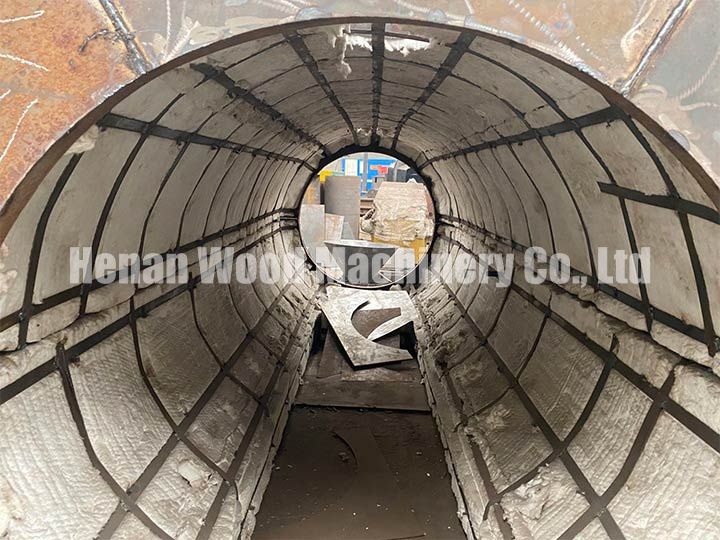
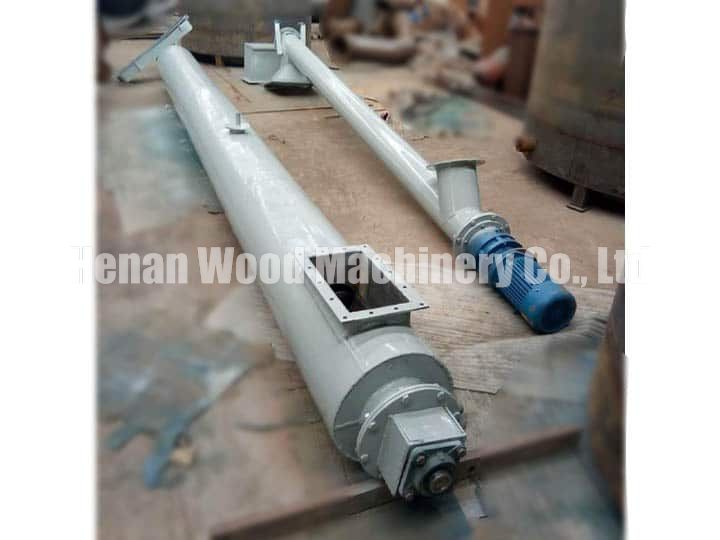
เครื่องป้อนสกรูและอุปกรณ์ระบายความเย็น
- อุปกรณ์ระบายความร้อนสามารถเชื่อมต่อกับปั๊มน้ำหรือท่อน้ำได้
- มันทำให้ถ่านอุณหภูมิสูงเย็นลงเพื่อป้องกันการเผาไหม้ที่เกิดขึ้นเองระหว่างการปล่อยวัสดุ
โครงสร้างภายในของสกรูลำเลียง
- โครงสร้างภายในของสกรูลำเลียงประกอบด้วยใบมีดสกรูแบบหมุนได้
- ใบมีดสกรูอยู่ภายในท่อทรงกระบอก
- การออกแบบนี้ขนส่งวัสดุอย่างมีประสิทธิภาพผ่านการเคลื่อนไหวทางกล
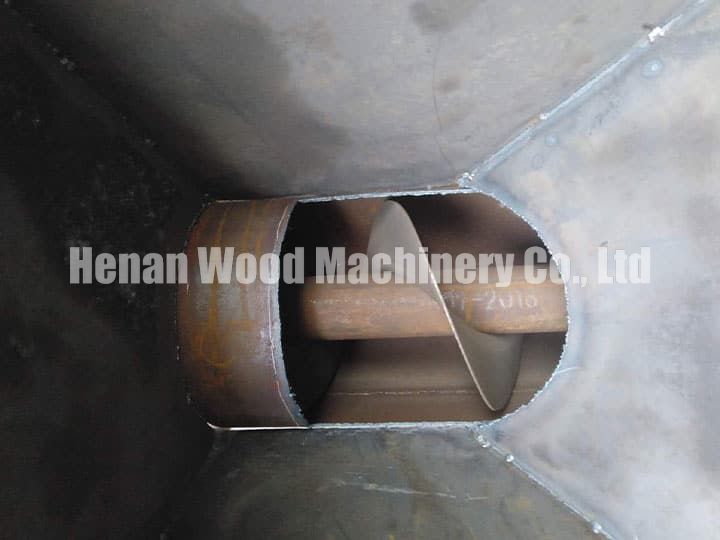
จะทำถ่านแกลบในเตาถ่านแบบต่อเนื่องได้อย่างไร?
หากต้องการถ่านแกลบในเตาถ่านแบบต่อเนื่อง ให้ทำตามขั้นตอนเหล่านี้:
การอุ่นเครื่องและการจุดระเบิด
- ใช้ก๊าซปิโตรเลียมเหลว (LPG) ในการจุดไฟเครื่องจักร
- เปิดเตาประมาณ 1 ชั่วโมง ต้องใช้ LPG ประมาณ 20-30 กิโลกรัมในการจุดไฟ และต้องจุดไฟเพียงครั้งเดียวเท่านั้น
- การอุ่นเครื่องจะเสร็จสิ้นเมื่ออุณหภูมิถึงระหว่าง 280°-330°C
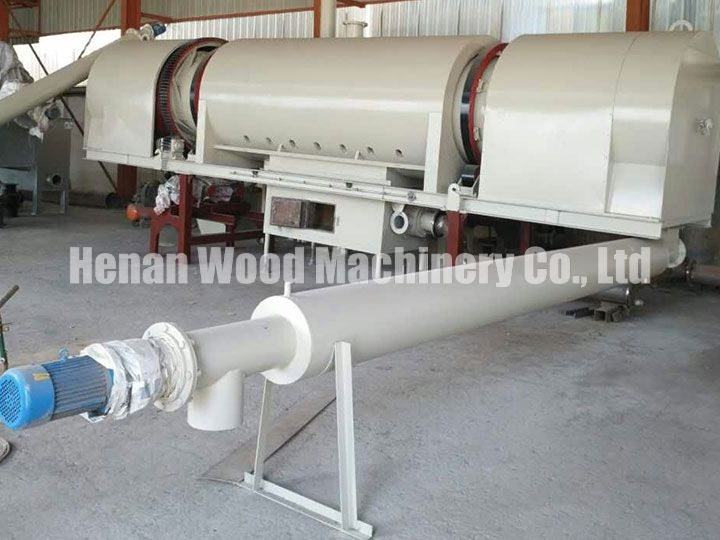
กระบวนการถ่าน
- เมื่อถึงอุณหภูมิอุ่นแล้ว ให้เริ่มเติมวัตถุดิบ เช่น แกลบ ลงในเตา
- สำหรับแกลบ วัสดุสามารถระบายออกได้เมื่อเตาเผามีอุณหภูมิถึง 280°C
- จุดไฟห้องเผาไหม้ และหลังจากถ่านกัมมันต์เป็นเวลา 10-20 นาที ให้สังเกตว่ามีก๊าซร้อนเกิดขึ้นในสระเผาไหม้หรือไม่
- หากมีก๊าซไวไฟเกิดขึ้น ให้จุดไฟให้ก๊าซเผาไหม้ในห้องเผาไหม้
- เมื่อกระบวนการเผาไหม้เริ่มต้นขึ้น ให้ปิดหัวเผา LPG
วงจรและการระบายความร้อน
- รอบการทำให้เป็นคาร์บอนใช้เวลาประมาณ 20 นาที หลังจากนั้นสามารถเอาวัสดุออกและแทนที่ด้วยวัตถุดิบสดสำหรับรอบใหม่
- การระบายความร้อนเป็นสิ่งจำเป็นเมื่อระบายวัสดุ เตามีคอนเดนเซอร์สองชั้นซึ่งเต็มไปด้วยน้ำหมุนเวียนเพื่อทำให้วัตถุดิบที่เป็นคาร์บอนเย็นลงก่อนที่จะระบายออก
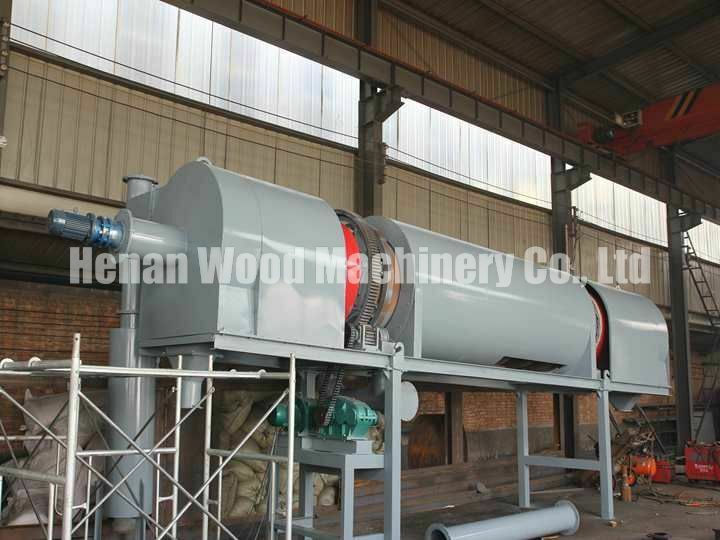
พารามิเตอร์ของเตาถ่านแบบต่อเนื่อง
| แบบอย่าง | WD-CF800 | WD-CF1000 | WD-CF1200 |
| เส้นผ่านศูนย์กลาง (มม.) | 800 | 1000 | 1200 |
| ความจุ(กก./ชม.) | 400-600 | 800-1000 | 1200-1500 |
| กำลังหลัก (กิโลวัตต์) | 18.5 | 18.5 | 20 |
| อุณหภูมิถ่าน (℃) | 500-800 | 500-800 | 500-800 |
| กำลังพัดลม (กิโลวัตต์) | 5.5 | 5.5 | 5.5 |
เตาถ่านแบบต่อเนื่องตั้งชื่อตามเส้นผ่านศูนย์กลางของเตา โดยมีเส้นผ่านศูนย์กลางใหญ่ขึ้น ทำให้สามารถแปรรูปวัตถุดิบได้มากขึ้น
ในบรรดารุ่นต่างๆ ที่มีจำหน่าย รุ่น WD-CF1000 มีความโดดเด่นเนื่องจากมีผลผลิตและราคาที่สมดุล ทำให้เป็นตัวเลือกยอดนิยมของลูกค้า
ขนาดปานกลางเป็นทางออกที่ดีที่สุดสำหรับผู้ที่มองหาคาร์บอไนเซชันที่มีประสิทธิภาพโดยไม่ต้องเสียค่าใช้จ่ายสูงกว่าสำหรับรุ่นที่มีขนาดใหญ่กว่า
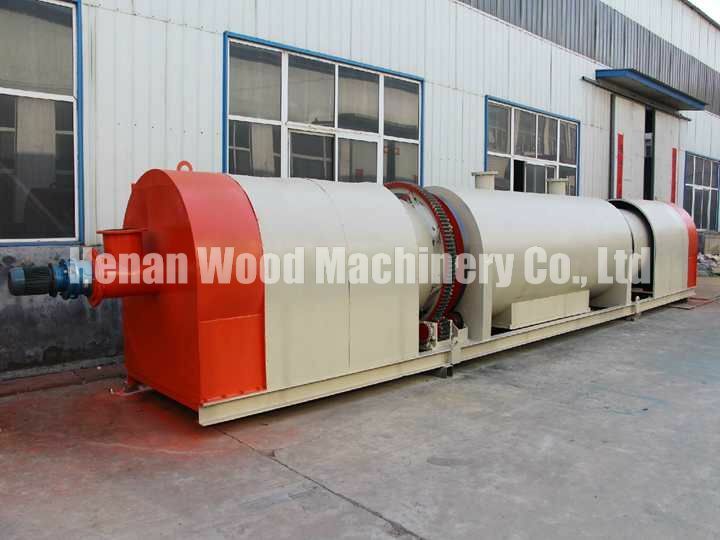
คุณสมบัติของเตาถ่านแบบต่อเนื่อง
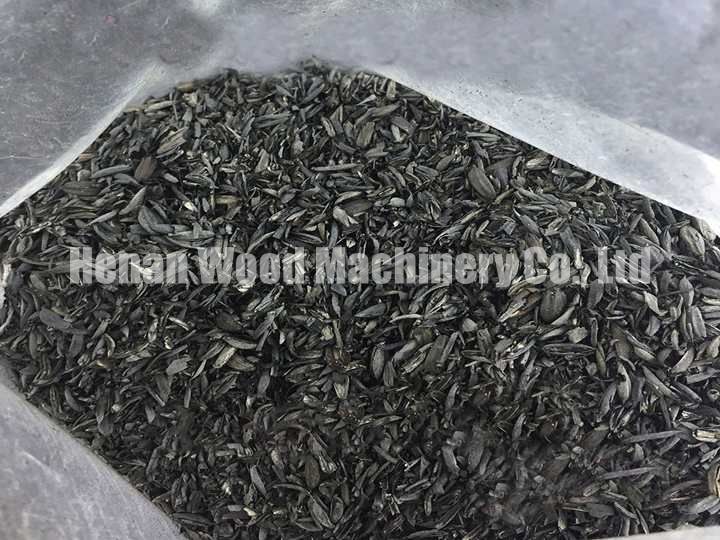
- การให้อาหารอย่างต่อเนื่อง
- เตาเผาอนุญาตให้มีการป้อนวัสดุต่อเนื่อง การคาร์บอไนเซชัน และการปล่อยวัสดุ ซึ่งช่วยเพิ่มประสิทธิภาพเมื่อเปรียบเทียบกับอุปกรณ์แบบแบทช์แบบดั้งเดิม.
- การทำงานอัตโนมัติสูง
- ด้วยระบบควบคุมอัจฉริยะ ช่วยลดแรงงานและแทนที่งานด้วยกระบวนการอัตโนมัติที่มีประสิทธิภาพมากขึ้น.
- การออกแบบที่เป็นมิตรต่อสิ่งแวดล้อม
- ใช้เชื้อเพลิงสะอาดและการกำจัดควันขั้นสูงเพื่อป้องกันมลพิษและสนับสนุนการผลิตที่มีคาร์บอนต่ำและยั่งยืน.
- การรวบรวมผลพลอยได้อัตโนมัติ
- เก็บรวบรวมยางไม้ น้ำส้มไม้ และก๊าซอย่างมีประสิทธิภาพระหว่างการคาร์บอไนเซชันเพื่อการใช้พลังงานหมุนเวียนอย่างครบวงจร.
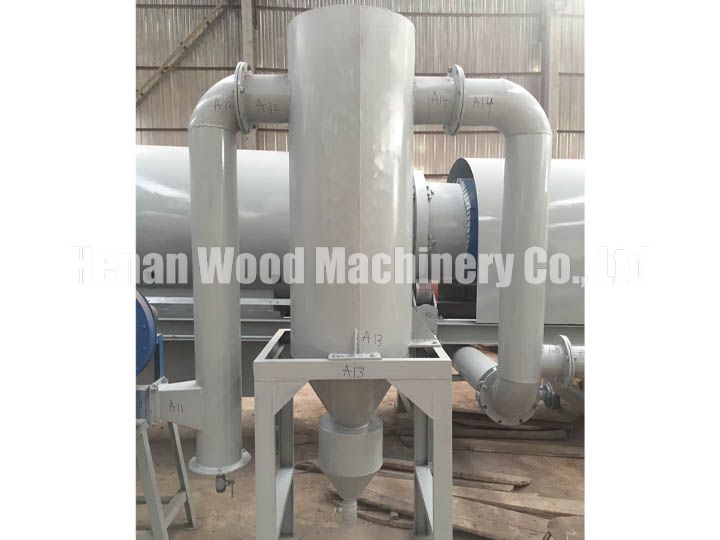
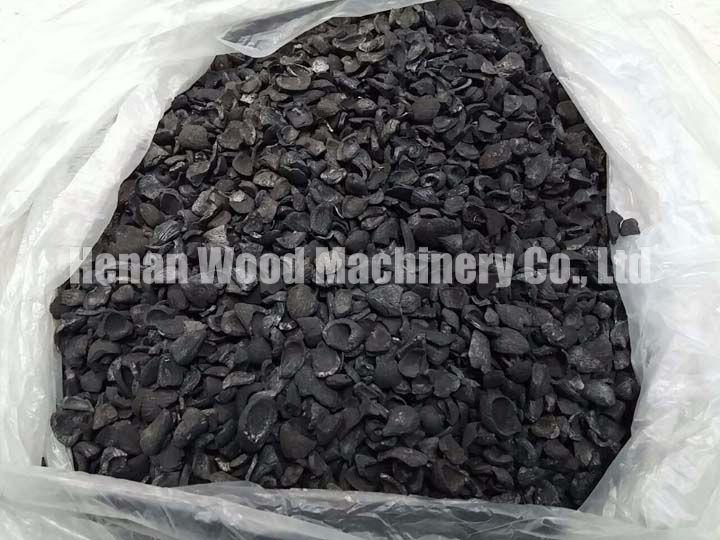
- ผลผลิตคุณภาพสูง
- ถ่านไม้ไม่เป็นพิษ ไม่มีสีและกลิ่น มีความชื้นต่ำกว่า 5% และเผาไหม้ได้นาน—เหมาะเป็นเชื้อเพลิงที่สะอาดและมีประสิทธิภาพ.
คำถามที่พบบ่อยของเตาถ่านแบบต่อเนื่อง
แหล่งความร้อนของเครื่องทำถ่านขี้เลื่อยคืออะไร?
เตาเผาคาร์บอไนเซชันต่อเนื่อง ใช้ ก๊าซปิโตรเลียมเหลว (LPG) เป็นแหล่งความร้อนเริ่มต้น โดยปกติจะใช้เพียง 15–20 กก. ต่อรอบ หลังจากทำงานประมาณ 1 ถึง 1.5 ชั่วโมง จะเริ่มผลิต ก๊าซที่สามารถเผาไหม้ได้ ซึ่งสามารถใช้เพื่อรักษาการทำงานอย่างต่อเนื่อง—ไม่จำเป็นต้องใช้ LPG เพิ่มเติม ซึ่งทำให้ LPG เป็นตัวเลือกที่แนะนำสำหรับการประหยัด พลังงาน และ ค่าใช้จ่าย.
วัสดุที่สามารถทำให้เกิดคาร์บอไนซ์โดยเตาคาร์บอไนเซชันเป็นเพียงวัตถุดิบชีวมวลหรือไม่?
นอกจากวัสดุชีวมวลแล้ว เตาเผาคาร์บอไนเซชันต่อเนื่อง ยังสามารถประมวลผลวัสดุต่างๆ เช่น ฟอยล์ดีบุก, ฟอยล์อลูมิเนียม, กระป๋อง, ขยะในบ้าน, พลาสติก และ ขยะอิเล็กทรอนิกส์ สำหรับประสิทธิภาพที่ดีที่สุด ขนาดวัสดุต้องอยู่ภายใน 10 เซนติเมตร เพื่อให้การคาร์บอไนเซชันมีประสิทธิภาพ.
ข้อดีของเตาถ่านแบบต่อเนื่องของเราเมื่อเปรียบเทียบกับผู้ผลิตรายอื่นคืออะไร?
เตาของเรามี ห้องเผาที่ใหญ่กว่า, การสร้างจากสแตนเลส, และ การจุดไฟอัตโนมัติ ใช้ พัดลมสแตนเลสที่ระบายความร้อนด้วยน้ำ และ ระบบเผาไหม้โดยตรงที่ปราศจากยางมะตอย เพื่อประสิทธิภาพที่สูงขึ้นและการทำงานที่สะอาดขึ้น.
ฉันต้องใช้พื้นที่เท่าใดจึงจะสามารถใช้เตาถ่านแบบต่อเนื่องได้?
แต่ละหน่วยต้องการพื้นที่ 250–300 ตารางเมตร โดยมีความกว้างขั้นต่ำ 10 เมตร และความยาว 22 เมตร การทำงานของเครื่องหนึ่งเครื่องต้องการทีมงาน สามคน.
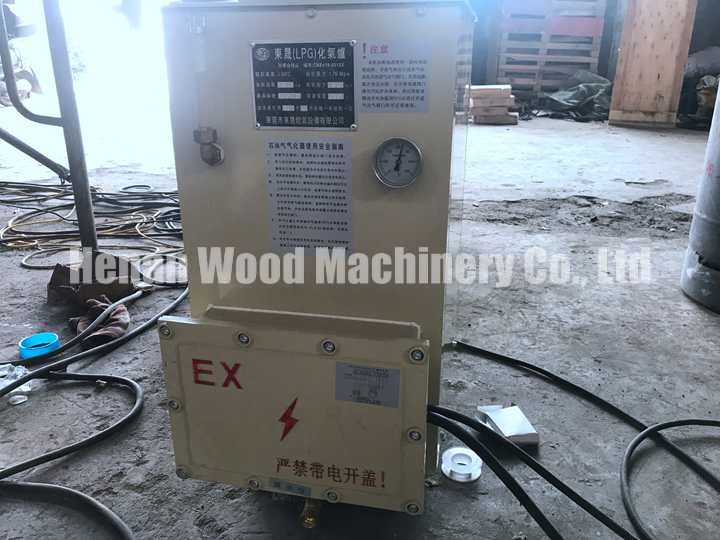
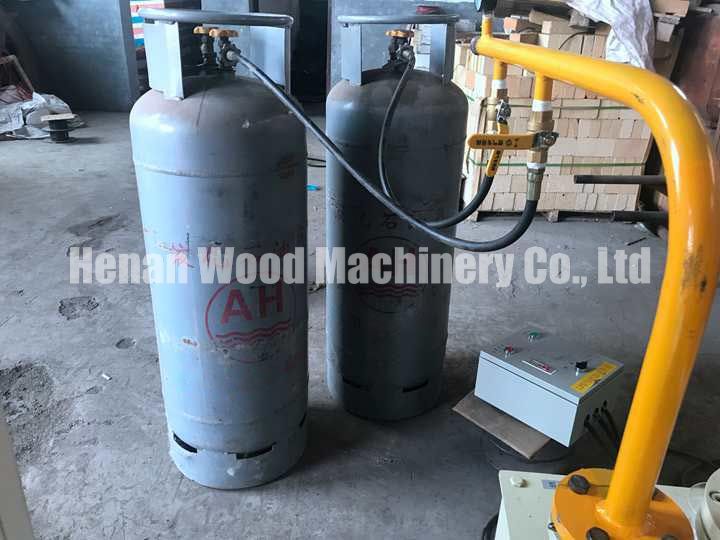
การผลิตถ่านอัดแท่งทำอย่างไร?
ถ่านที่ผ่านการเผาแล้ว charcoal สามารถบดให้ละเอียดเป็นผงถ่าน แล้วผสมกับสารยึดติดในอัตราส่วนที่กำหนด เครื่องจักร Shuliy มีอุปกรณ์หลากหลายเพื่อผลิตถ่านในรูปร่างต่างๆ
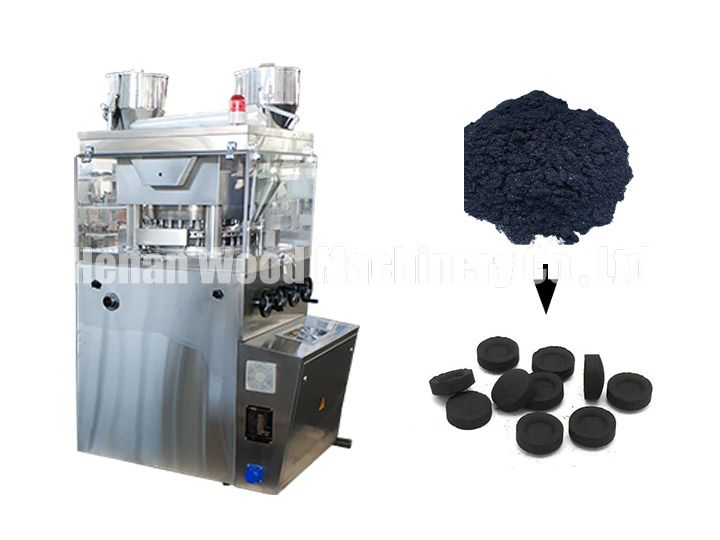
ใช้เครื่องทำถ่านชิช่า เพื่อทำถ่านชิช่าสี่เหลี่ยมและกลม ขนาด รูปแบบ และรูปร่างของถ่านชิช่าสามารถปรับแต่งได้ทั้งหมด.
เครื่องอัดถ่านแบบรังผึ้ง นี้สามารถอัดผงถ่านให้เป็นรังผึ้งหรืออัดแท่งถ่าน.
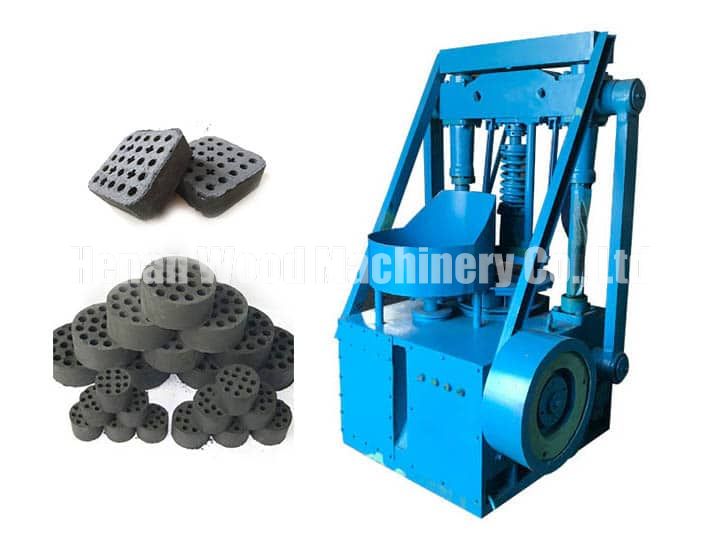
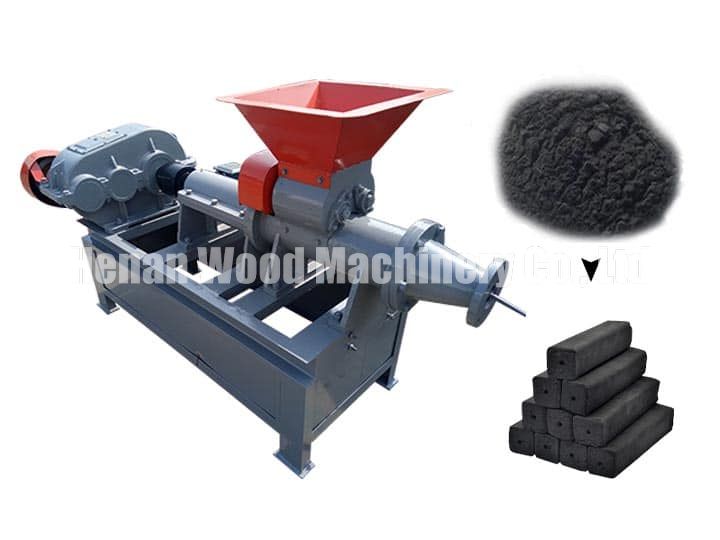
เครื่องอัดถ่าน ประมวลผลผงถ่านให้เป็นแท่งยาวทั่วไป ซึ่งสามารถใช้เป็นเชื้อเพลิงสำหรับการทำความร้อน.
เครื่องอัดถ่าน BBQ สามารถใช้ในการอัดผงถ่านให้เป็นถ่านอัดแท่งกลม สี่เหลี่ยม หรือรูปทรงหมอน.
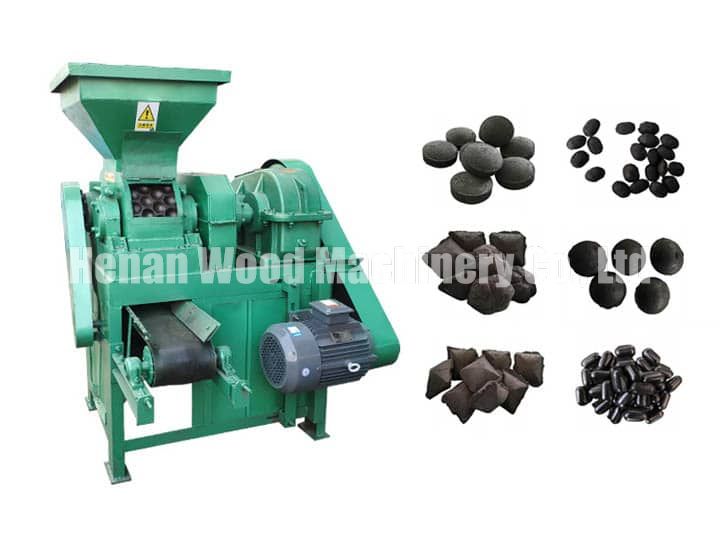
กำลังโหลดและจัดส่งเครื่องทำถ่านขี้เลื่อย
ลูกค้าในกานาสั่งซื้อเตาเผาถ่านแบบต่อเนื่อง WD-CF1000 ที่มีกำลังการผลิต 800-1000 กิโลกรัม/ชั่วโมง จากโรงงานผลิตเครื่องจักรคาร์บอนของเรา
ด้วยความต้องการถ่านบาร์บีคิวในตลาดท้องถิ่นที่เพิ่มมากขึ้น ลูกค้าจึงพยายามลงทุนในอุปกรณ์ถ่านแบบมืออาชีพเพื่อรองรับการเปิดตัวธุรกิจผลิตและจำหน่ายถ่าน
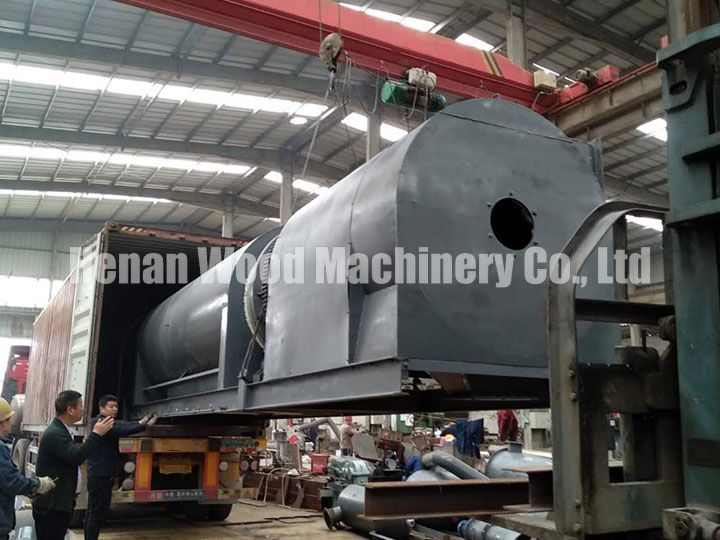
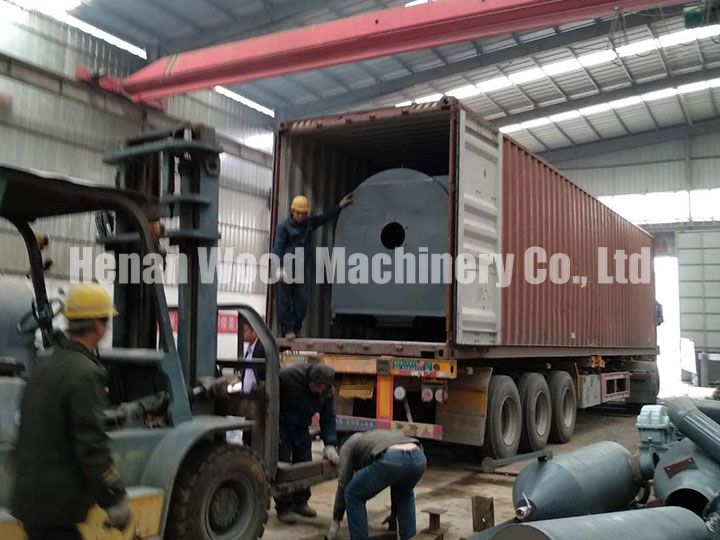
บทสรุป
โดยสรุป เตาถ่านแบบต่อเนื่องนำเสนอโซลูชั่นขั้นสูงและมีประสิทธิภาพสำหรับการทำให้วัสดุชีวมวลหลากหลายชนิดเป็นคาร์บอน ด้วยการป้อนอย่างต่อเนื่อง การควบคุมอัจฉริยะ และการรวบรวมผลพลอยได้โดยอัตโนมัติ ช่วยเพิ่มประสิทธิภาพการผลิตได้อย่างมากในขณะที่ลดผลกระทบต่อสิ่งแวดล้อมให้เหลือน้อยที่สุด
ไม่ว่าจะเป็นการผลิตถ่าน การผลิตพลังงาน หรือการใช้ทรัพยากรอย่างยั่งยืน เครื่องจักรนี้ถือเป็นการลงทุนที่เชื่อถือได้และคุ้มค่าสำหรับธุรกิจที่ต้องการเพิ่มประสิทธิภาพกระบวนการคาร์บอไนเซชัน และมีส่วนสนับสนุนอนาคตที่สะอาดและเป็นมิตรกับสิ่งแวดล้อมมากขึ้น
